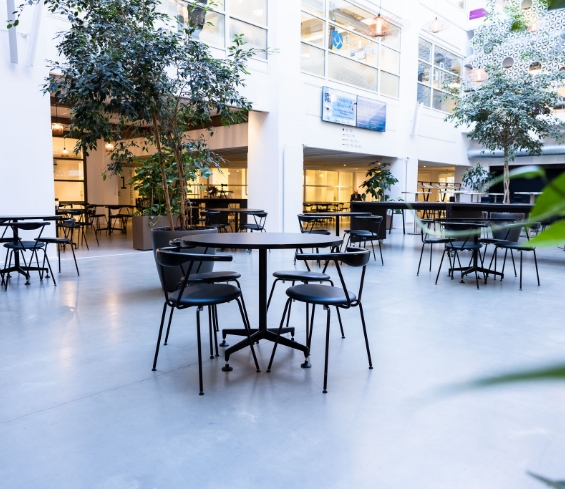Meetings and conferences are some of the most effective ways to create value for your business – both internally and externally. But of course, it requires thorough planning to ensure that everyone comes out of it with a good result.
When holding a meeting or conference, there are several things you need to keep in mind to ensure that it is a success. Here we have gathered 10 tips for you who are planning a conference.
Book your next meeting or conference at Symbion in Copenhagen
10 tips for your next meeting or conference
1) Find a date and time that suits as many as possible
When you are going to hold an event, it is important to find a time when everyone has the opportunity to participate. Plan well in advance and send an invitation in good time so that as many as possible have the opportunity to prioritize your meeting or conference.
2) Decide on a relevant theme
The theme of the meeting or conference must be relevant to the participants. Otherwise, you risk that people will not want to participate and that no decisions will be made or problems solved.
3) Choose the right event space
It is also important to choose the right place to hold the meeting or conference. For example, if it is an internal meeting, it can be held at the workplace. But if you are going to have customers or partners with you, it may be a good idea to rent event spaces. In addition, you must also make sure that you have access to the equipment that will be used for the meeting or conference.
4) Provide foods and beverages
Of course, you need to have food and drinks for the meeting or conference so that participants can keep their concentration. Coffee, water, and snacks are always a good idea, but if your event lasts more than half a day, lunch is also expected. Most times the event space can provide this for you. Remember to take into account possible allergies and other dietary preferences.
5) Have an interesting agenda or program
A good agenda or interesting program helps ensure that people get something out of the meeting or conference. Make sure you have a clear idea of what you are going to talk about and who is going to give presentations.
6) Invite the right introductory speakers
Whether you want to use internal or external speakers for the meeting or conference, it is important to choose the right ones. The speakers must have something interesting to say, and it is also important that they can inspire and motivate the participants.
7) Earmark time for networking
Networking is one of the main purposes of many conferences, so it is important to make sure that there is time for it. For example, you can arrange a reception or networking event.
8) Arrange entertainment and activities
Many conferences are long days, so it may be a good idea to arrange some entertaining activities, games, debates, or brainstorming sessions. It allows participants to relax and network differently.
9) Include breaks and varieties
It is important to include breaks and variety when planning longer meetings and conferences so that guests do not get tired. For example, consider having a lunch break or a shorter program in the afternoon.
10) Carry out a follow-up after the event
Meetings and conferences are often very productive, but in some cases, it may be appropriate to follow up on them so that the meeting or conference was not a waste of time. Set a deadline for when something is supposed to happen regarding the presented decisions or ideas at the event. It is also a good idea to agree on who is responsible for the respective parts.
7 things you should avoid
- A long introduction: It is important to capture the attention of the participants from the start, and therefore the introduction should be short. Do not go into depth with the background of the meeting or conference, but instead tell who is present and what is going to happen.
- A too tight and busy program: It is not necessary to fill the program with many items or presentations, because it will make the meeting or conference too busy, and it will be difficult to keep track of the schedule. Remember that there must also be room to go into depth with the topics.
- Not having a continuous dialog with the presenters: When you find presenters, it is a good idea to align the format of the presentation and the day so that problems do not suddenly arise at the conference or meeting. It may also be a good idea to allow presenters to get feedback from participants, so they can adjust their presentation or answer questions.
- Many and long questionnaires: At many meetings and conferences, time is allocated for questionnaires after presentations and lectures, but this is not necessarily a good idea. Often it is not structured well enough, and therefore there are too many or too long questionnaires that few get anything out of.
- Large lunch buffets: People eat too much when they are presented with large buffets, and overeating makes us more tired than focused. Instead, you can choose to set up lunch as a light buffet with few options or serve portioned lunch.
- Forgetting to thank all the participants: It is always a good idea to thank all those who have participated in the meeting or conference. Also, remember to get feedback from the participants on what they thought of the day so that you can improve it next time.
- Poor acoustics and artwork: Poor acoustics and artwork can make it difficult for participants to be attentive, so it is a good idea to make sure that there are no problems with the technology and that visual elements are of high quality.



